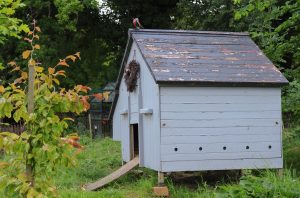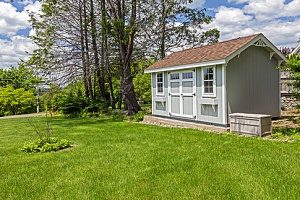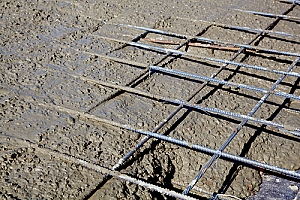 A shed foundation is the support system that protects a shed from certain conditions. Similar to a home foundation, it ensures the building is protected from bad weather conditions or becoming unlevel due to excess moisture in the ground below.
A shed foundation is the support system that protects a shed from certain conditions. Similar to a home foundation, it ensures the building is protected from bad weather conditions or becoming unlevel due to excess moisture in the ground below.
It is often essential to build a shed foundation to protect the shed from water damage as well. If the shed is placed directly on the ground, water can easily damage the outside wood or find its way inside during a flood. Of course, there are many other practical reasons to consider a shed foundation.
Fortunately, DIY people can quickly and reliably build a shed foundation if they follow the steps laid out in this guide and use high-quality tools and building supplies.
Find Out if You Need a Permit
Before you do anything, it is important to contact the Home Owners Association (HOA) to determine whether you need a permit. The regulations are different for each county, and some do not allow new constructions such as a shed unless the homeowner first receives a permit.
If your county does require that you first receive a permit to construct the shed foundation and eventually place your shed outside of your home, then there are certain questions that they may have. To prepare properly for the application process for a permit, be sure to make note of the type of shed you plan to have, its size, the location and foundation type (see below). In stricter areas, the frost line may also come into consideration.
While this may seem extensive, the process is typically quite easy for homeowners and the permit approval process does not take long. In many instances, there is no need to receive a permit before beginning construction.
Pick The Location for Your Shed Foundation
 You may have to decide the location of the shed before receiving a permit. However, it is important to take your time and find the best location for your shed. Remember, the shed will likely be there for more than a decade.
You may have to decide the location of the shed before receiving a permit. However, it is important to take your time and find the best location for your shed. Remember, the shed will likely be there for more than a decade.
Of course, the aesthetic concerns of the location play a role in determining where you build your shed foundation. However, it is perhaps even more important to pick a location that is level. While it is possible to work around a very slight non-level surface, finding an area that is the most level is very helpful during the building process.
Homeowners should also consider what surrounds the shed when picking a location. Trees that are not sturdy may pose a threat to the shed during storms. Make sure the shed is in a location that is on your property line and out of the way of harm if bad weather were to occur. For colder regions of the country, it is important to also consider the frost line and check with the HOA to learn more about the frost line at your property.
Choose a Foundation Type
There is a range of building material options for homeowners to consider using to build their shed foundation. Among the more common include concrete floors or piers, wood and compacted gravel. The two most highly recommended options are concrete and wood. They offer a strong and reliable foundation that will last for decades.
Each foundation type has pros and cons. The advantages of a concrete shed foundation include:
- More durable over time;
- Supports larger sheds; and
- Holds heavy equipment.
 The drawbacks to a concrete foundation are that they may cost more and require more advanced installation. The benefits of a wood shed foundation include:
The drawbacks to a concrete foundation are that they may cost more and require more advanced installation. The benefits of a wood shed foundation include:
- More cost-efficient;
- Easier installation;
- Less excavation; and
- Supports small sheds.
The drawbacks to a wood foundation are that it may not support sheds quite as well as concrete long-term, although it is still very reliable. While each situation is unique, wood sheds are often the more recommended option for smaller sheds, whereas concrete works well for larger shed foundations that are heavier.
How to Build a Concrete Shed Foundation
You can start building your concrete shed foundation by ensuring the ground you are building on is level and dry (no standing water). You will then need to measure the length and width of the shed to determine how large the concrete slab needs to be. Some prefer a larger slab to create an excess concrete area.
Once you establish the dimensions, you can then lay the concrete slab. It is often best to trust in a professional company for this step, although experienced DIYers might be able to carry out this step themselves. After laying the foundation, you will need wedge-style anchor bolts to place into the concrete slab, which is sometimes required by local building regulations. The finished concrete slab should be four inches above grade.
How to Build a Wood Shed Foundation
 Wood shed foundations are typically easier for DIYers and reliable enough to withstand a lot of weight for many years.
Wood shed foundations are typically easier for DIYers and reliable enough to withstand a lot of weight for many years.
After you establish level ground and determine the location for your shed, you will start the building process for the wood shed foundation by establishing the size of your wood shed foundation.
You can then place concrete blocks at each corner and in between for additional support. We recommend placing the concrete blocks on pea gravel to level the foundation and prevent sinking long-term. You can then secure the 4x4s onto the concrete blocks and finish by building out the rest of the wood shed foundation.
Important note: the larger your shed, the more concrete blocks you will need to ensure your shed foundation is properly supported.
Contact Our Team at Dirt Connections for More Insights
Get in touch with our team at Dirt Connections for more information about how to build a shed foundation or other home projects such as ponds, docks and more.. We offer high-grade building materials to help you get started with your shed foundation project.
Our professional team is also glad to answer questions about your project specifically and guide you in the right direction as to which materials are best for you and how much you are likely to need.








































